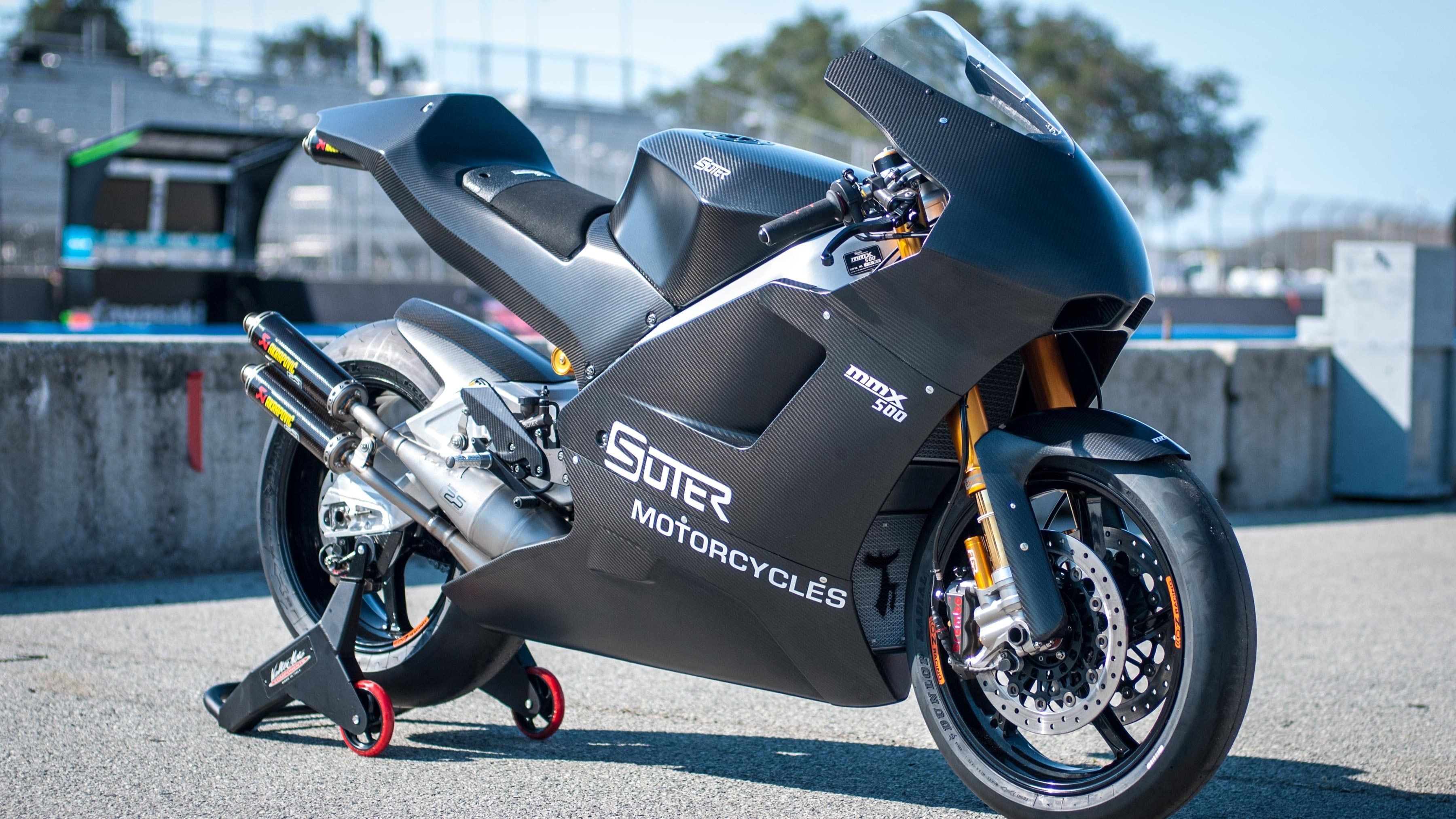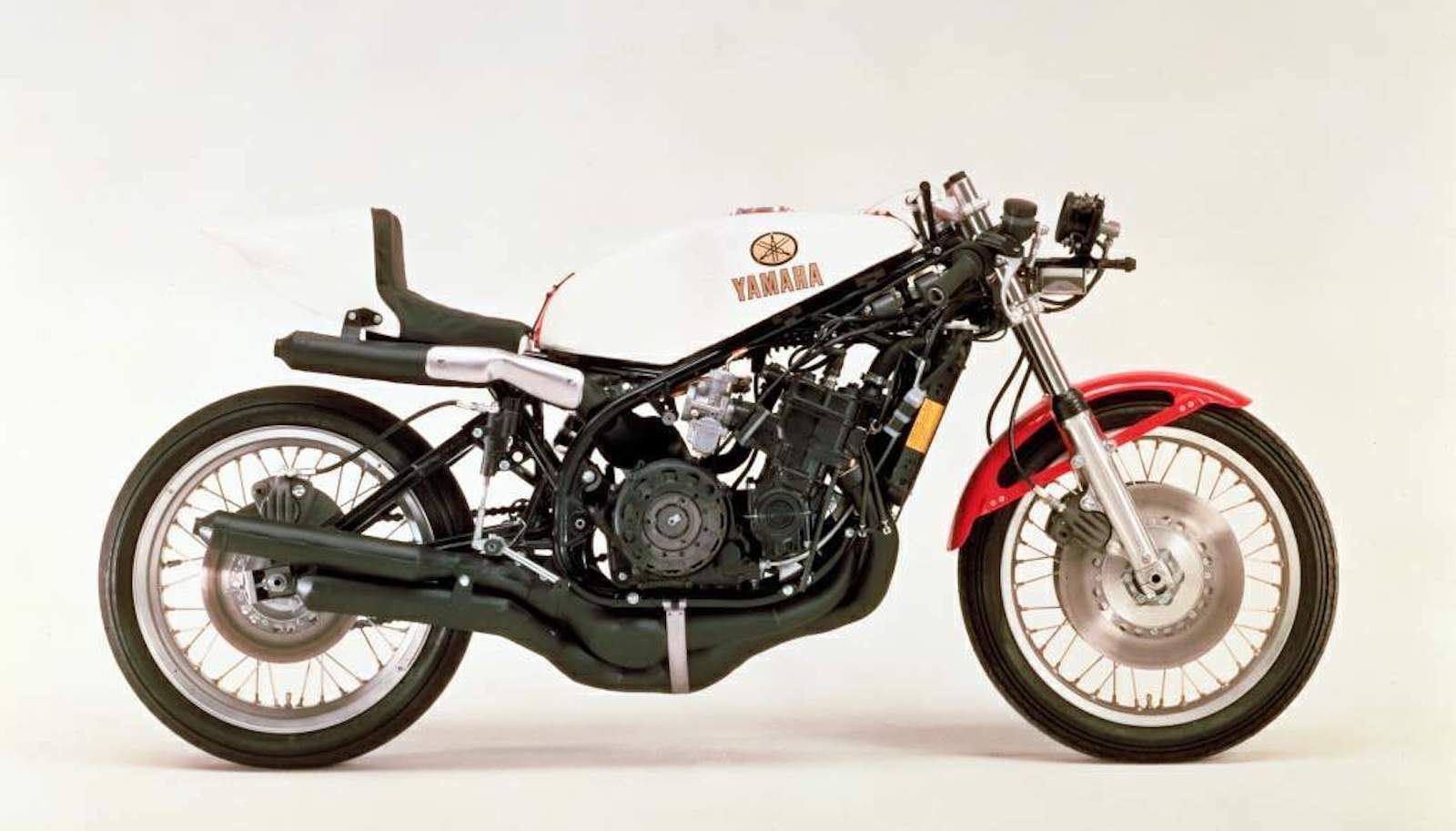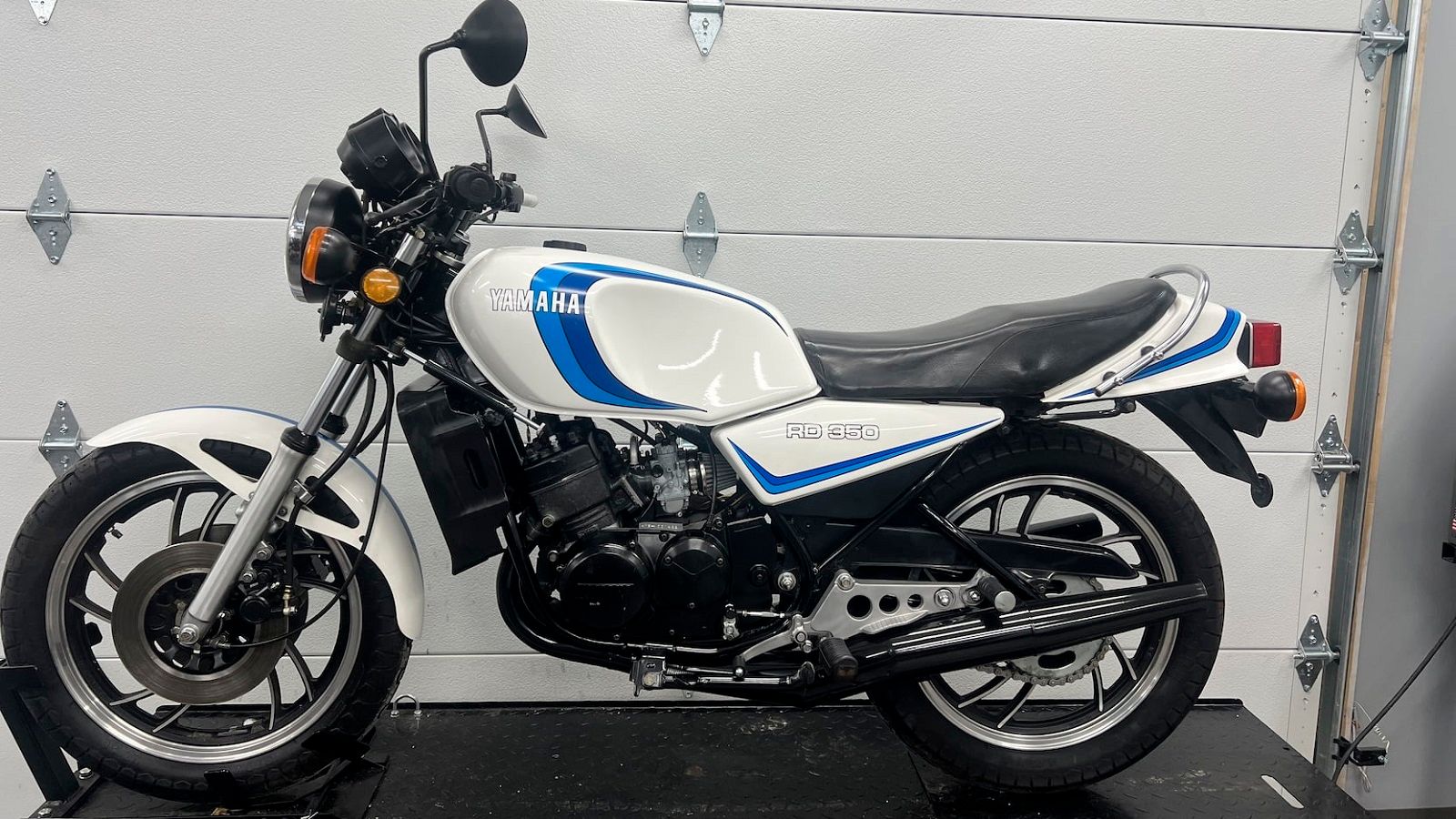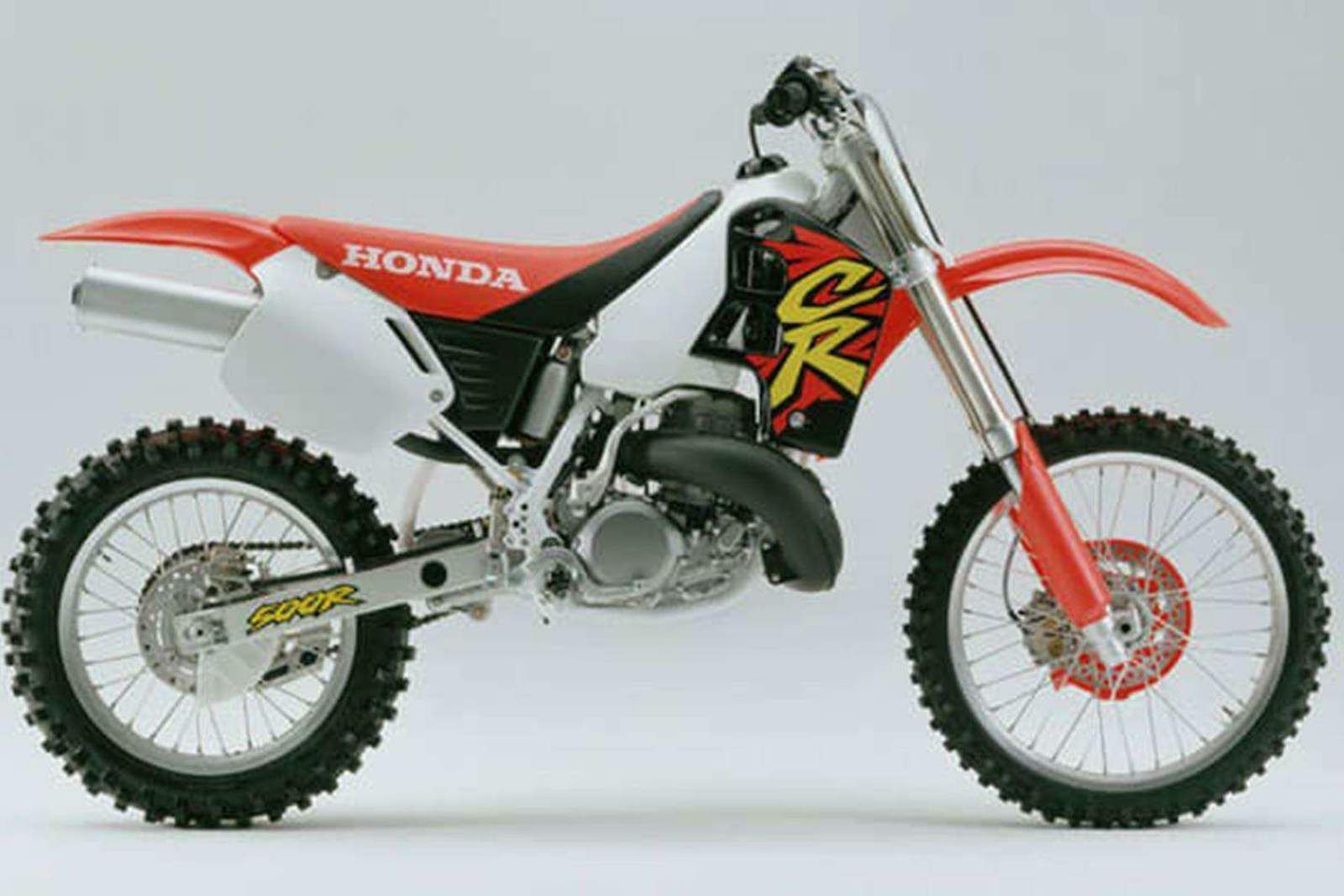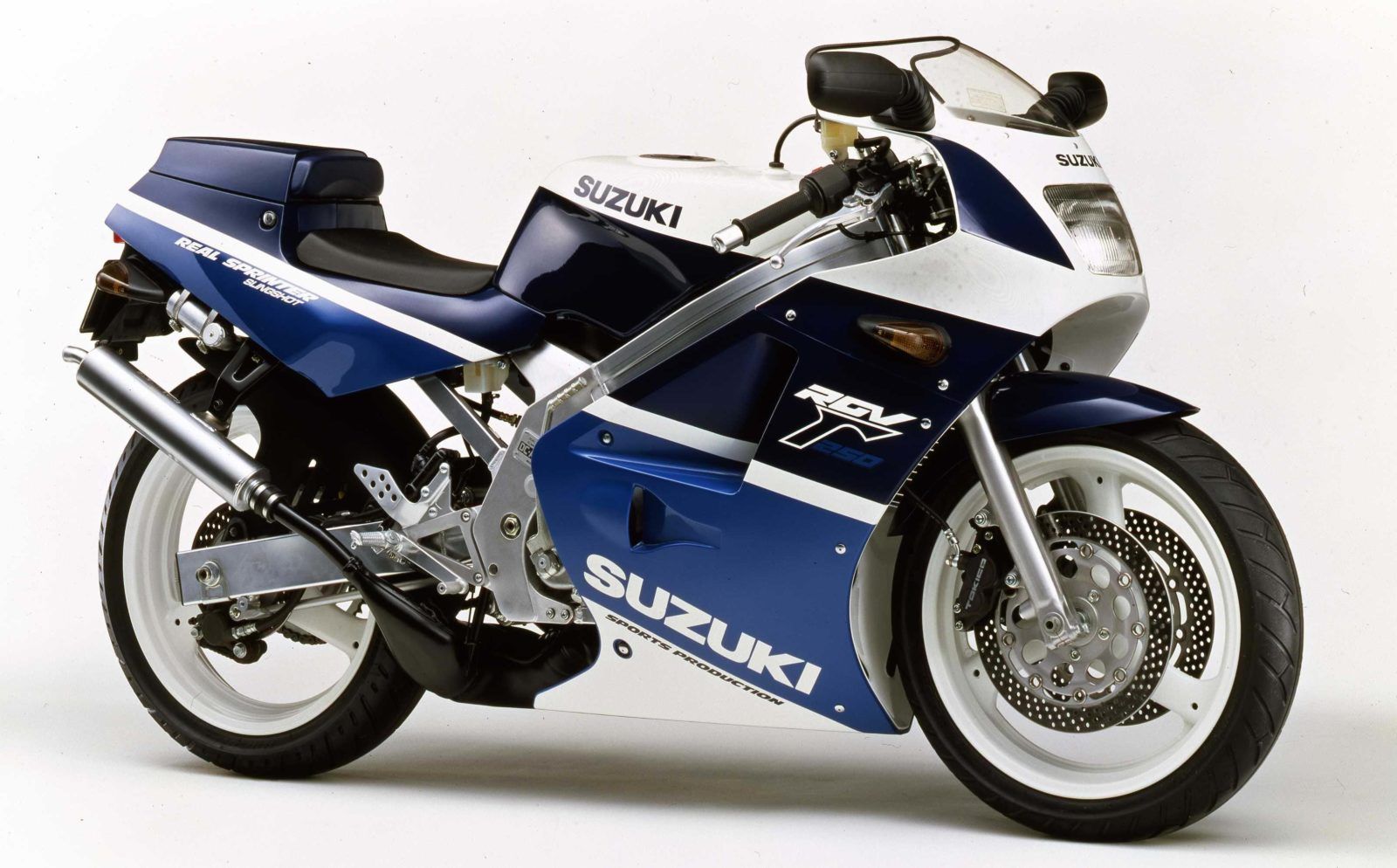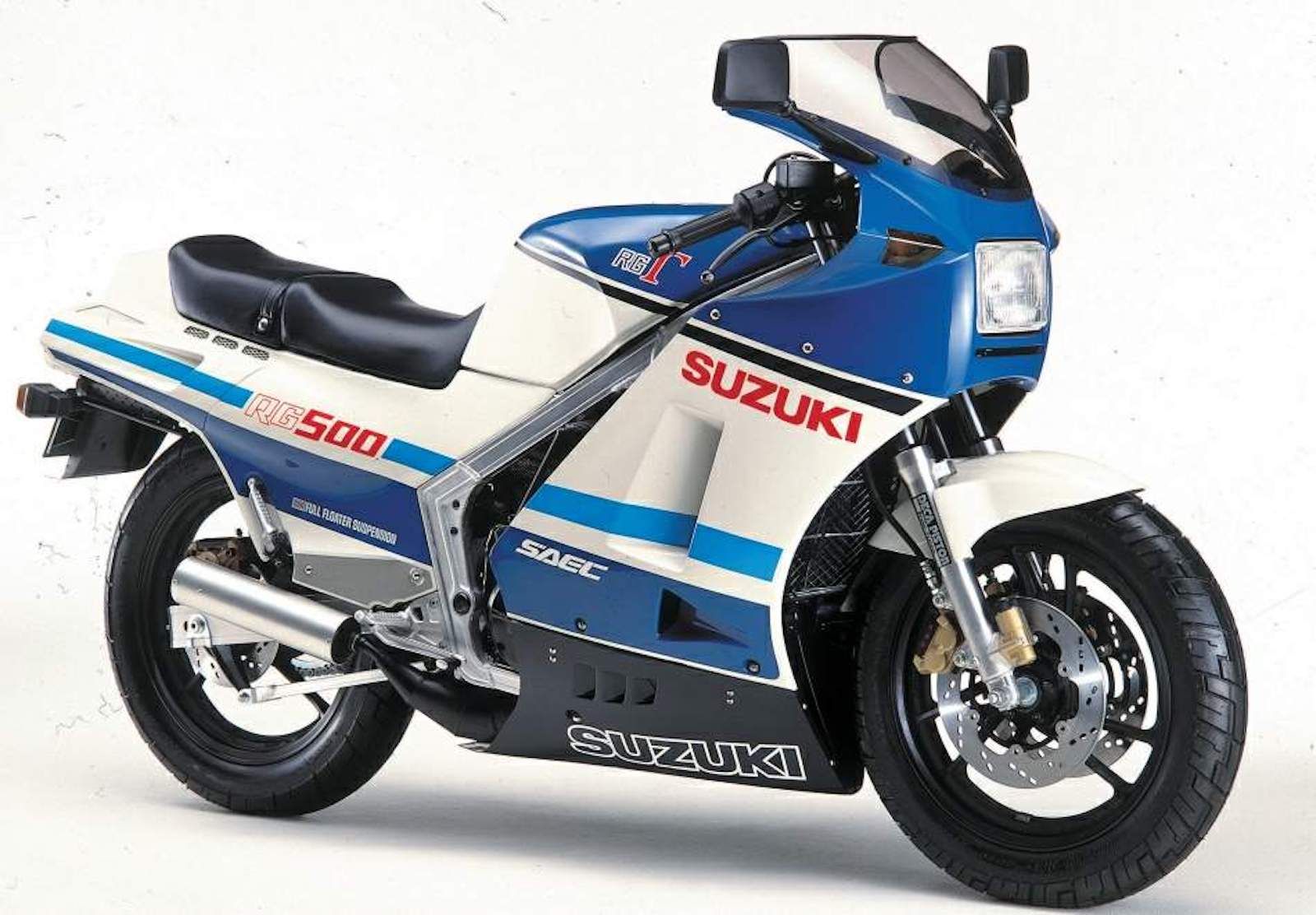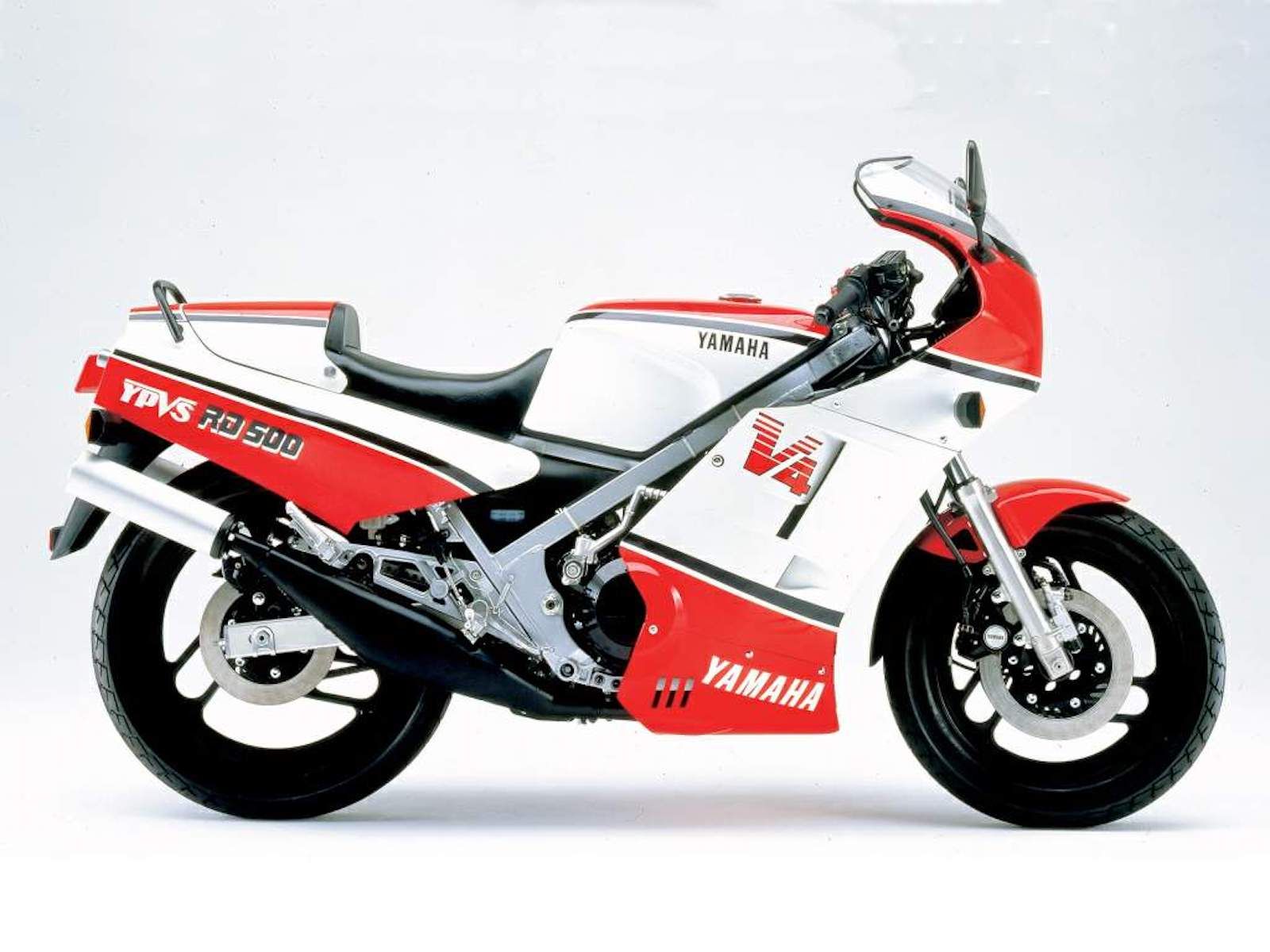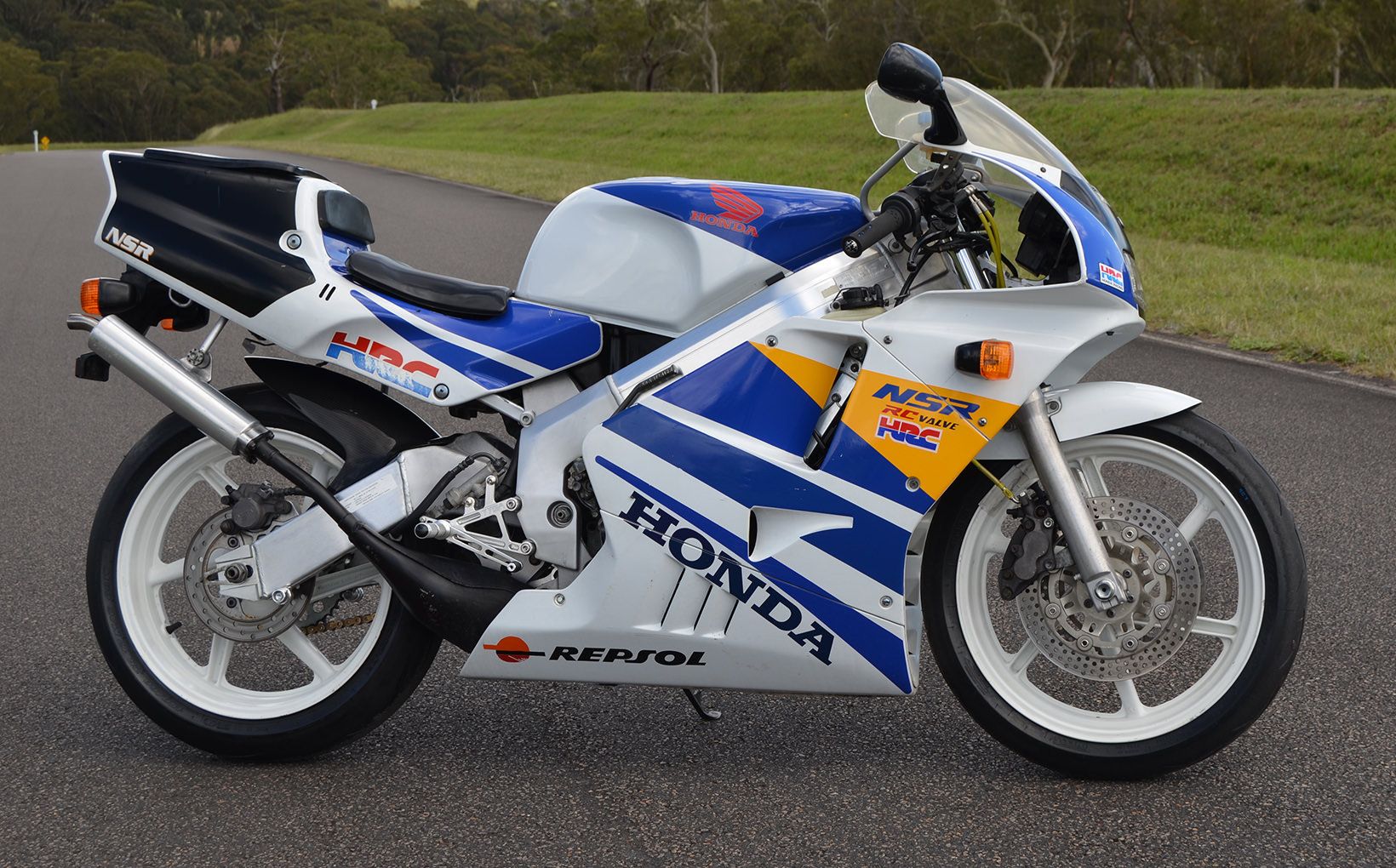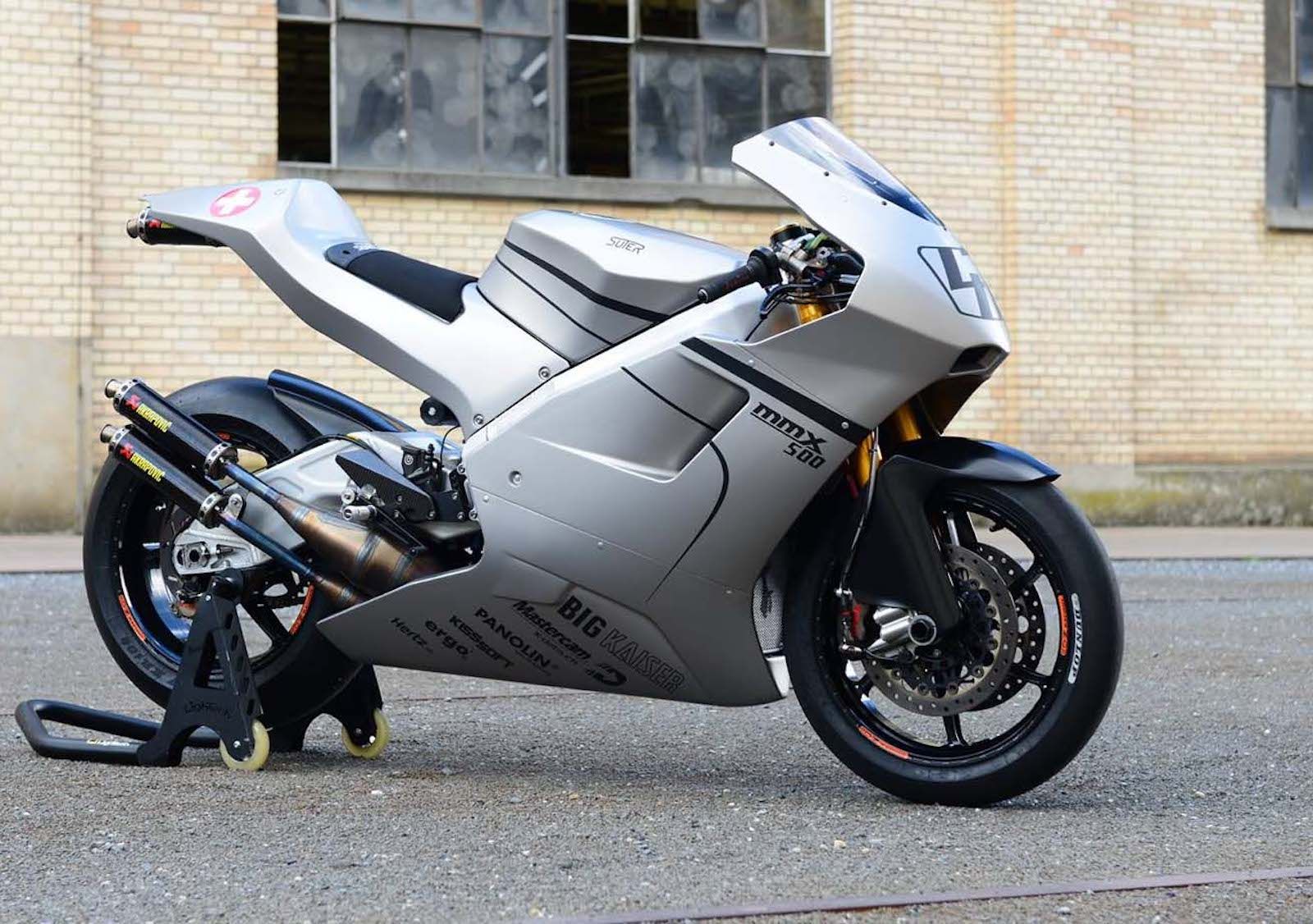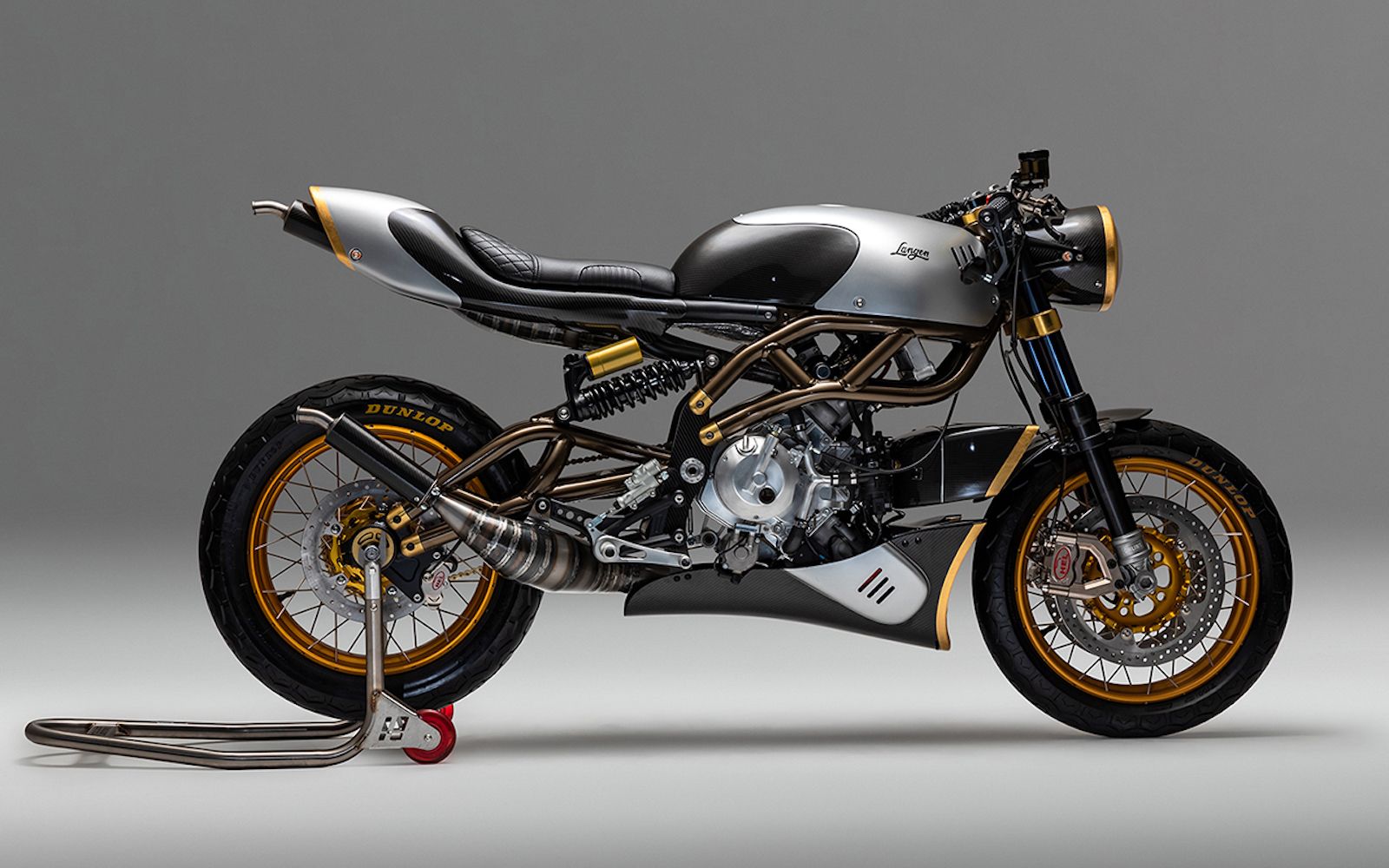When the Japanese introduced two-stroke technology to motorcycle Grand Prix racing in the early 1960s, few could have any idea how dominant the tech would become in the following forty years in racing. In road bikes, as well, two-strokes appeared to be the perfect engine: light, simple, cheap to manufacture and much more powerful than four-stroke engines.
But there was one problem for a world increasingly worried about pollution: two-strokes are very ‘dirty’ engines, burning their lubricating oil along with the petrol, leading to extremely poor emissions. Modern fuel injection systems have addressed this problem successfully, but it appears it might be too late for a new breed of screaming two-stroke road bikes to start appearing in showrooms.
Update September 2023: While most two-strokes have been off the shelves for a long time, these iconic bikes are still sought after by both collectors and enthusiasts. We want our readers to know more about these magnificent machines, so we updated this list with detailed specs for each bike.
10 Kawasaki H2 Mach lV
As if the 1969 Kawasaki H1 Mach lll 500cc model wasn’t mad enough, which one road test claimed was only safe when parked with the engine off, Kawasaki then turned up the insanity dial with the 1971 H2 Mach lV. The bike carried a three-cylinder two-stroke engine of 750cc, developing 74 horsepower while weighing 452 pounds. If the handling was better than the ‘Widow Maker’ Mach lll, it was still a handful in anything but a straight line and even doing that, it was hard to keep the front wheel on the ground.
Performance Specs
| Displacement | 748cc |
| Engine Type | Air-cooled Two-stroke inline-three |
| Power | 74 horsepower |
| Torque | 57 pound-feet |
| Weight | 423 pounds (dry) |
| Transmission | 5-speed wet multiplate |
| Top Speed | 120 mph |
Arriving before the seminal Z1 900, it was yet another nail in the coffin that was the British motorcycle industry which was still building parallel twin engined roadsters much as it had been doing for the past 20 years. The writing was on the wall, and it was bikes such as the H2 Mach lV that was doing the writing.
9 Yamaha TZ 750
If two-stroke engines had four cylinders, they tended to be of V4 or square four configuration. When Yamaha unveiled its TZ750 it was unique in having an inline four cylinder two-stroke engine, producing 89 horsepower initially in 1974, which rose to 120 horsepower by 1979. In the 1970s, Formula 750 racing was hugely popular, and it was the preserve of fire-breathing two-stroke engined bikes from Kawasaki, Suzuki, and Yamaha.
Performance Specs
| Displacement | 694cc (A); 747cc (B to F) |
| Engine Type | Water-cooled Two-stroke inline-four |
| Power | 89 horsepower (A to C); 120 horsepower (D to F) |
| Torque | 55 pound-feet |
| Weight | 346 pounds (dry for A to C); 335 pounds (dry for D to F) |
| Transmission | 6-speed |
| Top Speed | 186 mph |
What set Yamaha’s approach apart from their competitors was that they developed the TZ750 specifically for the series, and it was a brutal beast. With the top speed lingering in the 180s, it's fast even by today's standards. The bike ate through the racing tires of the time with abandon and tying itself in knots even on the straights when the throttle was opened. Famously, Kenny Roberts turned one into a flat track racer and won the 1975 Indy Mile event. It scared him so much that he himself was instrumental in getting the bike banned!
8 Yamaha RD350LC
Yamaha took lessons learned with the TZ750 and put them to much better use in the RD350LC, including water-cooling and a monoshock rear end. Yamaha turned to Yamaha Europe for help in designing and configuring the bike, which meant that it was already at an advantage when it went on sale and subsequently became a huge success, particularly in England.
Performance Specs
| Displacement | 347cc |
| Engine Type | Liquid-cooled Two-stroke parallel-twin |
| Power | 47 horsepower |
| Torque | 29.7 pound-feet |
| Weight | 328 pounds (wet) |
| Transmission | 6-speed wet multiplate |
| Top Speed | 114 mph |
It was fast enough to take on 750cc four-stroke inline fours. The handling had come on a long way from the Kawasaki H1 and H2 and its profile was helped by a massively successful one-make racing series. It was even promoted by none other than Barry Sheene himself. It won Bike of the Year twice in the UK and was that country’s most stolen bike! Legendary and collectible.
7 Honda CR500R
Off-road motorcycling has always been where you’ll find the most two-stroke engines, even today, and it’s not hard to see why: light weight and huge power are the perfect ingredients for success. When manufacturers started bolting in 500cc two-stroke singles into their MX and Enduro bikes, fireworks were guaranteed and Honda’s 1985 CR500 was one of the most incendiary.
Performance Specs
| Displacement | 491cc |
| Engine Type | Liquid-cooled Two-stroke single-cylinder |
| Power | 64.6 horsepower |
| Torque | 53.3 pound-feet |
| Weight | 238 pounds (wet) |
| Transmission | 5-speed wet multiplate |
| Top Speed | Approximately 90 mph |
With almost 65 horsepower in a bike weighing 238 pounds took some taming, but it also took some beating, winning the 500cc MX class eight years in a row. Honda had resisted two-stroke technology for decades but typically, when it relented, the result was total domination.
6 Suzuki RGV250
In the late 1980s, manufacturers - and customers - were still aware of the advantages of a super-lightweight, small-displacement sports bike, and who can blame them when the result was bikes such as the RGV250? The 249cc, two-stroke V-Twin pushed out 60 horsepower which was plenty in a chassis weighing 282 pounds dry!
Performance Specs
| Displacement | 249cc |
| Engine Type | Liquid-cooled Two-stroke 90° V-Twin |
| Power | 61 horsepower |
| Torque | 30 pound-feet |
| Weight | 282 pounds (dry) |
| Transmission | 6-speed constant mesh |
| Top Speed | 125 mph |
The power band was narrow - between 8,000 and 11,000rpm - which made it tricky but the chassis more than made up for it and a well-ridden RGV250 could run rings around 750cc and 1000cc sports bikes on track. Sadly, however, the age of the two-stroke road bike was coming to an end and a new breed of 400cc four-strokes were more reliable, needed less servicing and, crucially, were easier to ride. But what a glorious swan song for two-stroke road bikes.
5 Suzuki RG500
There was a time when anyone could buy a 500cc Grand Prix bike from the factory and go racing with the stars of the day: can you imagine doing that today? The Suzuki RG500 was also available as a road-legal bike, complete with a 95 horsepower, four-cylinder, twin crank square four two-stroke engine.
Performance Specs
| Displacement | 498cc |
| Engine Type | Liquid-cooled Two-stroke Square-four |
| Power | 83 horsepower |
| Torque | 53 pound-feet |
| Weight | 386 pounds (wet) |
| Transmission | 6-speed |
| Top Speed | 147 mph |
The bike was light and fast, as long as you kept the engine on the boil above 5000rpm, below which there was little power. Above it, however, and you needed to hang on: not many bikes of the time, irrespective of engine size, could match the RG500 for acceleration. At a time of stodgy and heavy sports bikes, this really was a Grand Prix bike for the road.
4 Yamaha RD500LC
You might think that, given the name, this was merely a 500cc version of the successful RD350LC. Think again. In the 1980s, manufacturers were keen to capitalize on race success by offering road legal versions of their Grand Prix bikes to the public. Following Suzuki’s RG500 and Honda’s NSR400, the Yamaha RD500LC had a 500cc two stroke V4 engine bolted in to a lightweight frame and bodywork.
Performance Specs
| Displacement | 499cc |
| Engine Type | Liquid-cooled Two-stroke 50° V4 |
| Power | 88 horsepower |
| Torque | 48 pound-feet |
| Weight | 436.5 pounds (wet) |
| Transmission | 6-speed |
| Top Speed | 148 mph |
The engine was seriously de-tuned from the full racing bikes but still, 88 peaky two-stroke horsepower was more than enough to turn the hair grey, even if the Japanese had, by this time got a handle on building frames out of more than drinking straw-thickness steel tubes.
3 Honda NSR250
The 1980s were a great time for race replicas, with models from Suzuki, Yamaha, Kawasaki and this one from Honda. With ‘only’ 45 horsepower and a weight of 328 pounds, it might not have sounded like the fastest road bike, but it was certainly fast enough to worry the insurance companies.
Performance Specs
| Displacement | 249cc |
| Engine Type | Liquid-cooled Two-stroke 90° V-twin |
| Power | 45 horsepower |
| Torque | 24 pound-feet |
| Weight | 310.8 pounds (wet) |
| Transmission | 6-speed constant mesh |
| Top Speed | 130 mph |
The thing that really set the pulses racing of every red-blooded boy who dreamed of being a Grand Prix rider was the fact that the NSR250 looked exactly like the bikes that were winning in the 250cc Grand Prix world championship, complete with Rothmans sponsorship paint job and a single-sided swing arm. The good old days…
2 Suter MMX 500
How many enthusiasts fervently wish that Grand Prix racing hadn’t abandoned two-strokes in favor of four-strokes in 2001? Even if the 125cc and 250cc classes continued with two-stroke tech for a number of years, the days of the blindingly fast two-stroke 500cc bikes was gone. But what if the two-stroke had remained the power unit of choice?
Performance Specs
| Displacement | 576cc |
| Engine Type | Liquid-cooled Two-stroke V4 with counter-rotating crank |
| Power | 195 horsepower |
| Torque | Undisclosed |
| Weight | 280 pounds (wet) |
| Transmission | 6-speed cassette-style gearbox |
| Top Speed | 192 mph |
That’s what Suter asked themselves before creating the MMX 500. Suter is well known in GP circles for building some of the best chassis but in 2017, it decided to go the whole hog and build a complete bike, albeit not for racing. The engine was a 576cc, twin-crank V4 developing a claimed 195 horsepower! Weight was 280 pounds so we’ll leave it to you to imagine the performance, if you can!
1 Langen Two-Stroke
Today, the only two strokes to be found are fitted to MX and Enduro bikes: the era of the road-going two-stroke is long gone. Although not quite. In a small workshop in Northern England, a firm called Langen is hand-building utterly beautiful and exclusive motorcycles powered by a 250cc V-Twin two-stroke engine. Pushing out 75 horsepower while weighing 251 pounds gives a power to weight ratio of 660 horsepower per tonne!
Performance Specs
| Displacement | 249.5cc |
| Engine Type | Liquid-cooled 90° V-Twin Two-Stroke |
| Power | 76 horsepower |
| Torque | 33 pound-feet |
| Weight | 265 pounds (wet) |
| Transmission | 6-speed |
| Top Speed | 140 mph |
It’s bristling with top-end suspension and braking components and lightweight carbon fiber, aluminum and titanium construction. While we doubt this is the beginning of a resurgence of two-stroke motorcycles from the major manufacturers, it does rather set the heart racing!

